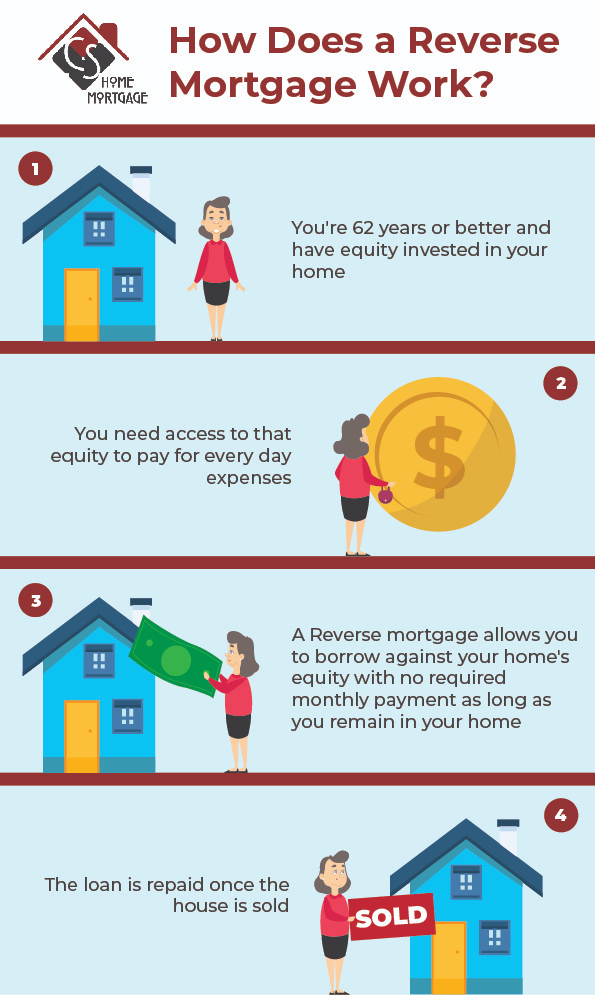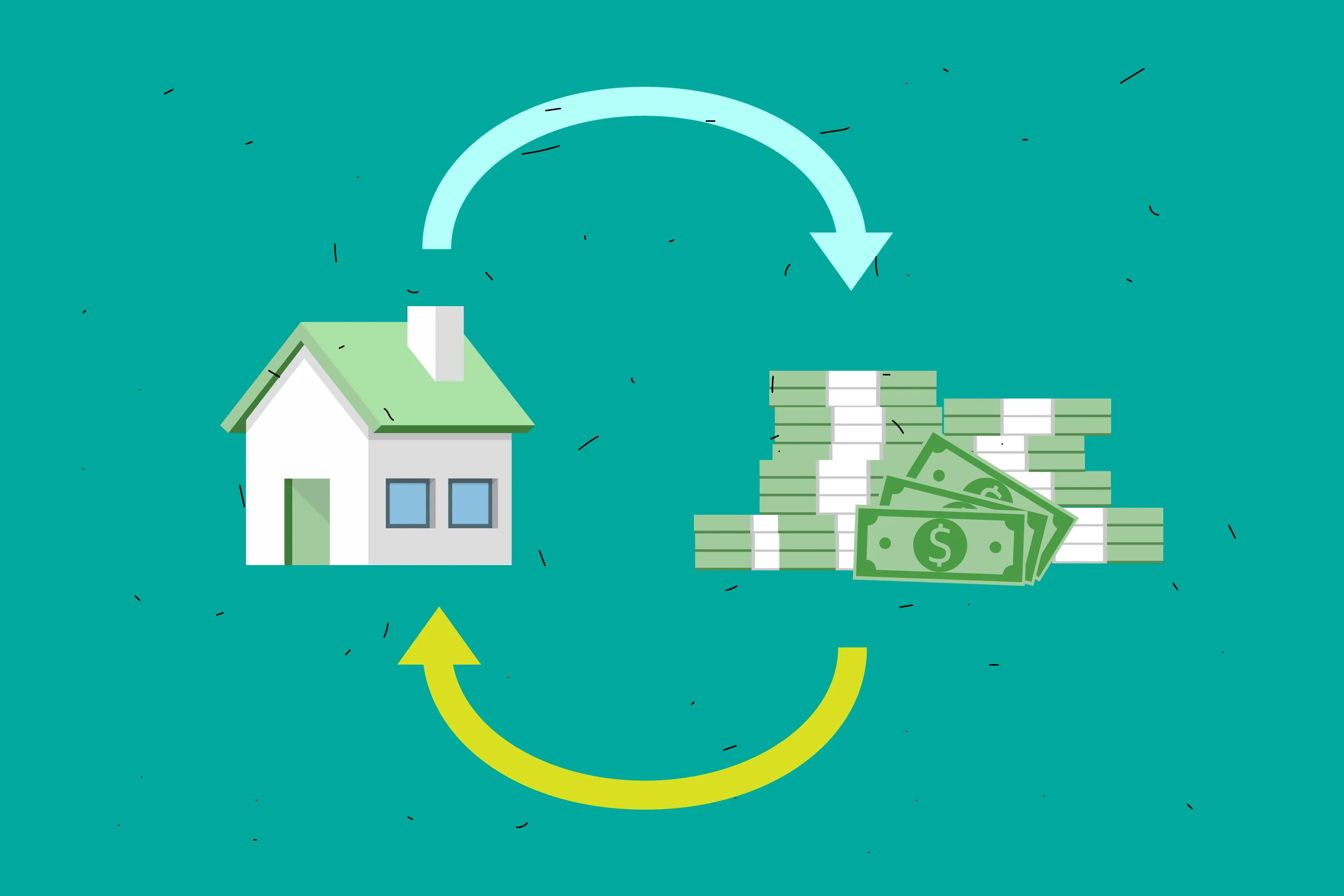Step-By-Step: Just How to Acquisition a Reverse Home Mortgage With Self-confidence
Navigating the intricacies of acquiring a reverse home mortgage can be overwhelming, yet a methodical approach can equip you to make informed decisions. It starts with evaluating your qualification and understanding the subtleties of numerous finance options offered in the market (purchase reverse mortgage). As we discover each step, it ends up being evident that confidence in this economic choice hinges on complete preparation and notified options.
Recognizing Reverse Mortgages

The primary mechanism of a reverse mortgage involves borrowing versus the home's worth, with the financing quantity raising with time as passion builds up. Unlike standard home loans, debtors are not needed to make monthly payments; rather, the financing is settled when the house owner offers the home, leaves, or passes away.
There are 2 major kinds of reverse home loans: Home Equity Conversion Mortgages (HECM), which are government guaranteed, and proprietary reverse home mortgages used by personal lenders. HECMs typically give greater defense as a result of their regulative oversight.
While reverse home loans can use monetary relief, they also include costs, consisting of source charges and insurance policy premiums. It is critical for potential debtors to totally comprehend the terms and implications before continuing with this economic option.
Evaluating Your Qualification
Qualification for a reverse mortgage is mainly established by several essential aspects that possible borrowers must think about. Applicants should be at least 62 years of age, as this age demand is set to make sure that debtors are coming close to or in retired life. In addition, the home has to offer as the borrower's primary residence, which means it can not be a vacation or rental residential property.
An additional essential facet is the equity placement in the home. Lenders commonly require that the borrower has a sufficient quantity of equity, which can influence the quantity readily available for the reverse mortgage. Generally, the more equity you have, the bigger the lending amount you might get.
In addition, possible consumers must show their capability to satisfy monetary commitments, consisting of real estate tax, homeowners insurance, and maintenance costs - purchase reverse mortgage. This analysis commonly includes a financial analysis performed by the loan provider, which assesses income, credit rating, and existing financial debts
Last but not least, the home itself need to meet details standards, including being single-family homes, FHA-approved condos, or particular manufactured homes. Understanding these factors is essential for figuring out eligibility and planning for the reverse mortgage procedure.

Investigating Lenders
After establishing your eligibility for a reverse home loan, the following action involves investigating lending institutions who provide these economic items. It is important to recognize reliable loan providers with experience backwards home mortgages, as this will ensure you get trustworthy guidance throughout the process.
Begin by examining lending institution qualifications and certifications. Search for loan providers that are participants of the National Opposite Home Mortgage Lenders Organization (NRMLA) and are approved by the Federal Housing Administration (FHA) These affiliations can indicate a commitment to ethical practices and compliance with industry requirements.
Checking out client evaluations and testimonies can provide insight right into the loan provider's track record and customer care top quality. Websites like the Better Business Bureau (BBB) can likewise provide scores and problem backgrounds that might help inform your decision.
Additionally, talk linked here to financial experts or real estate therapists who specialize in reverse mortgages. Their knowledge can help you navigate the alternatives readily available and suggest credible lenders based upon your one-of-a-kind economic circumstance.

Comparing Lending Alternatives
Comparing lending alternatives is an important step in safeguarding a reverse mortgage that straightens with your monetary objectives. When evaluating numerous reverse home loan items, it is important to consider the certain attributes, expenses, and terms linked with each choice. Beginning by assessing the kind of reverse mortgage that finest matches your needs, such as Home Equity Conversion Home Mortgages (HECM) or proprietary finances, which may have different qualification criteria and advantages.
Following, pay interest to the rate of interest and fees related to each loan. Fixed-rate fundings give security, while adjustable-rate choices might use lower preliminary prices yet can change in time. Furthermore, consider the upfront costs, consisting of home mortgage insurance premiums, origination charges, and closing expenses, as these can significantly impact the overall cost of the loan.
Additionally, evaluate the payment terms and exactly how they align with your long-term financial technique. When the financing have to be settled is essential, recognizing the effects of just how and. By completely comparing these elements, you can make an informed decision, guaranteeing your selection sustains your monetary wellness and offers the security you look for in your retired life years.
Settling the Purchase
Once you have actually meticulously examined your choices and selected one of the most appropriate reverse home loan product, the following step is to finalize the acquisition. This process involves numerous important steps, guaranteeing that all necessary click now documents is precisely finished and sent.
First, you will require to gather all required documents, including evidence of income, home tax declarations, and property owners insurance paperwork. Your lender will certainly provide a checklist of particular records needed to promote the approval procedure. It's important to offer exact and complete details to avoid hold-ups.
Following, you will undertake an extensive underwriting procedure. During this stage, the lending institution will analyze your financial circumstance and the worth of your home. This may consist of a home appraisal to figure out the property's market price.
As soon as underwriting is full, you will certainly receive a Closing Disclosure, which details the last terms of the funding, consisting of fees and interest rates. Testimonial this record thoroughly to make sure that it straightens with your assumptions.
Conclusion
In conclusion, navigating the procedure of acquiring a reverse mortgage requires an extensive understanding of qualification standards, attentive research on lenders, and cautious contrast of car loan alternatives. By systematically sites following these steps, people can make informed choices, making sure that the chosen mortgage straightens with financial goals and needs. Inevitably, an educated technique promotes confidence in securing a reverse mortgage, giving monetary security and support for the future.
Look for lending institutions that are members of the National Opposite Mortgage Lenders Association (NRMLA) and are approved by the Federal Real Estate Management (FHA)Comparing finance alternatives is an essential action in protecting a reverse home loan that aligns with your economic objectives (purchase reverse mortgage). Begin by assessing the type of reverse home mortgage that ideal fits your needs, such as Home Equity Conversion Home Mortgages (HECM) or exclusive finances, which may have different qualification requirements and benefits
In verdict, navigating the process of acquiring a reverse home loan requires a detailed understanding of qualification requirements, diligent research study on lenders, and mindful comparison of lending alternatives. Eventually, a well-informed strategy promotes self-confidence in protecting a reverse home mortgage, supplying financial security and support for the future.